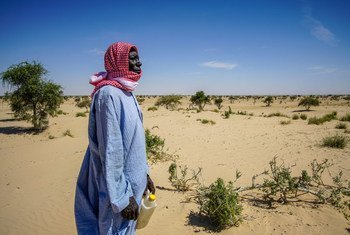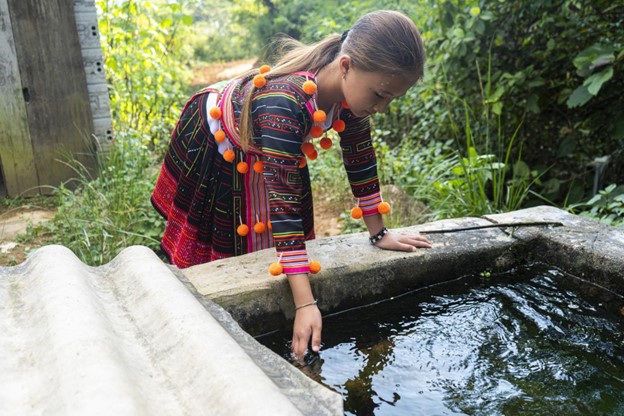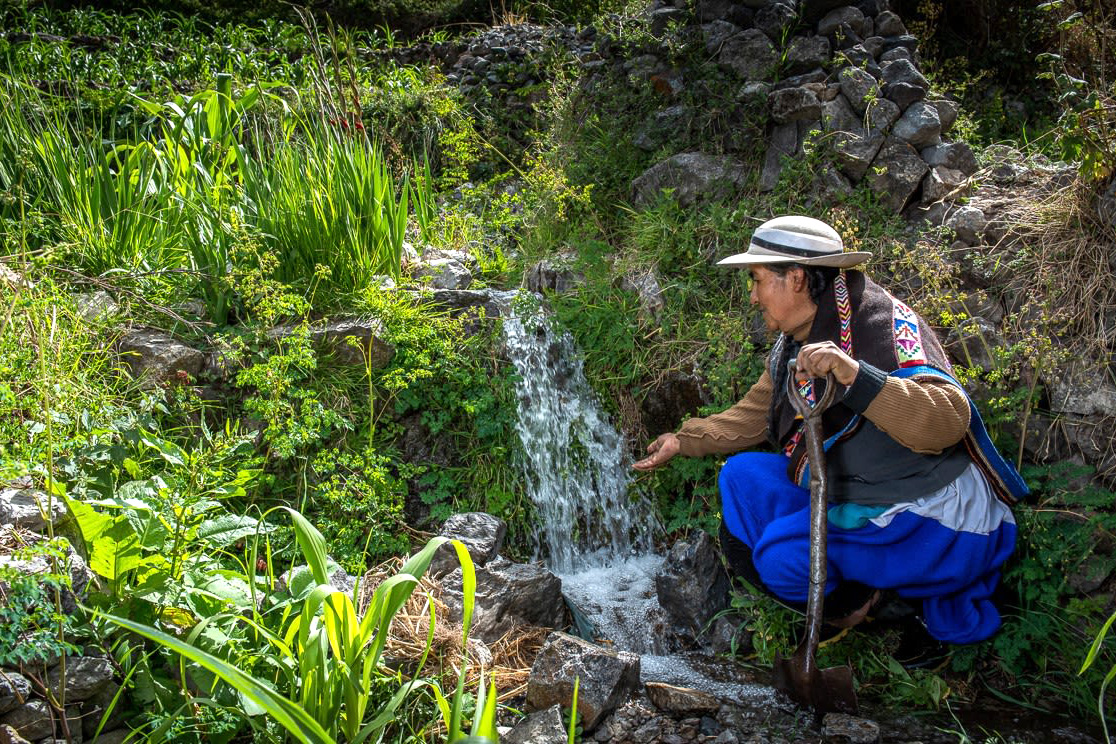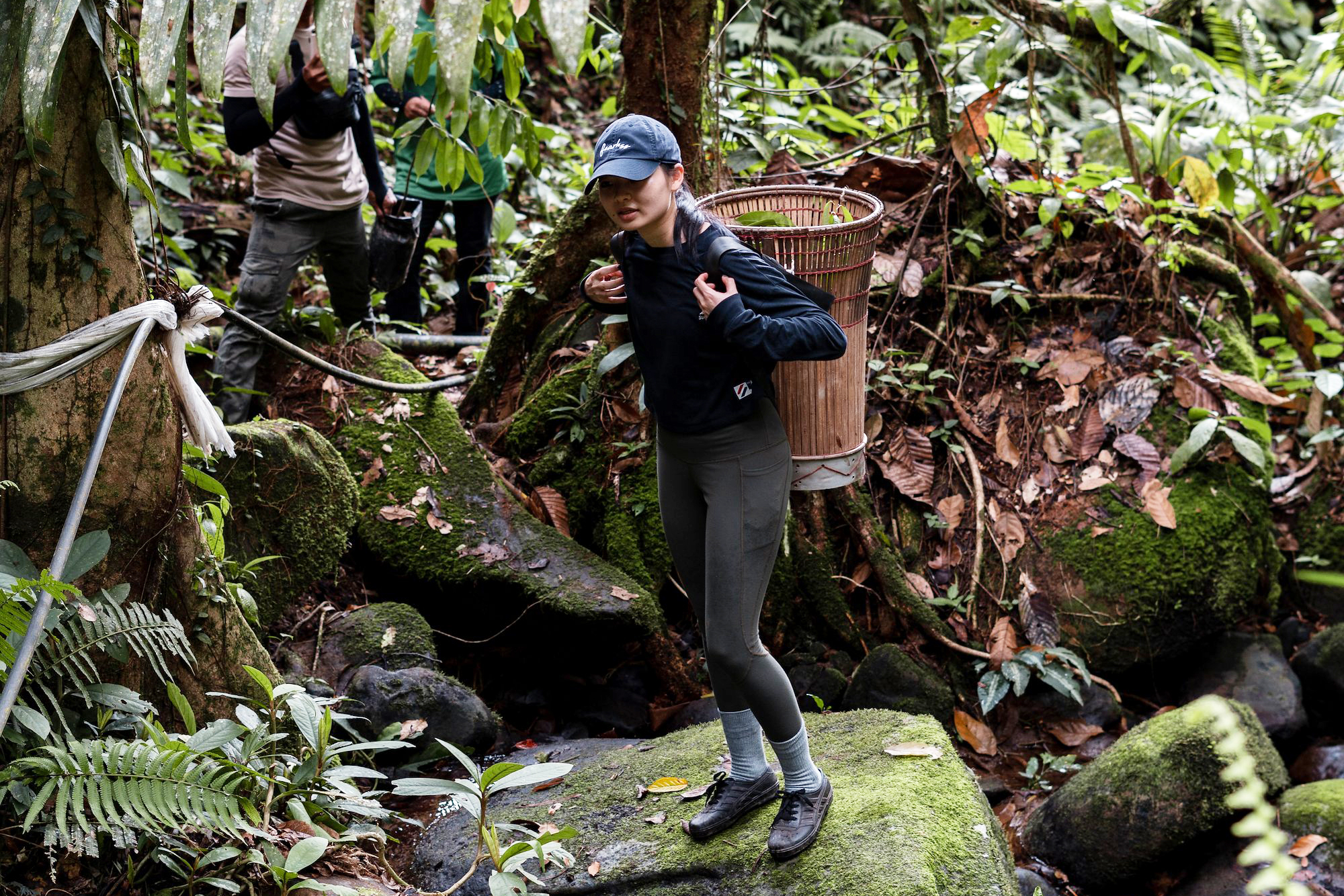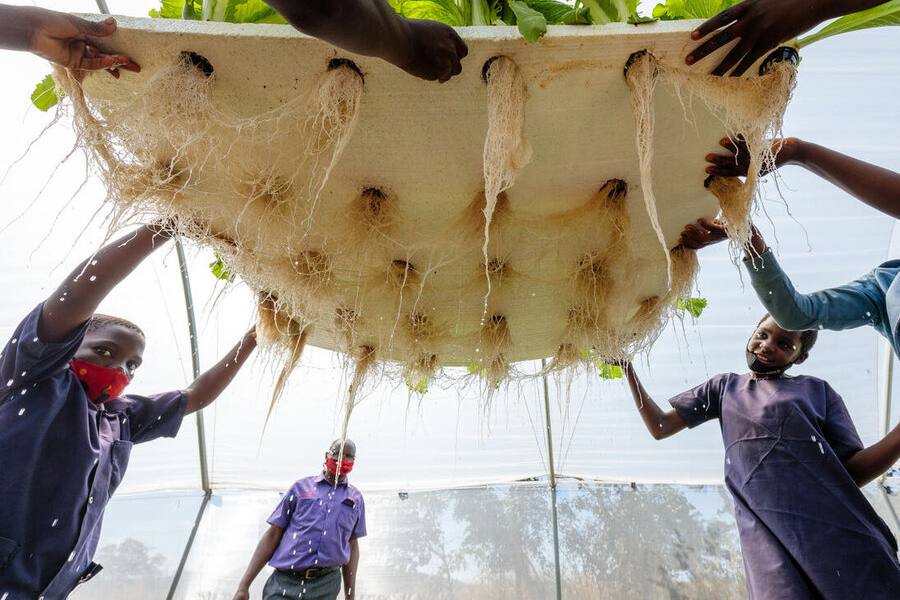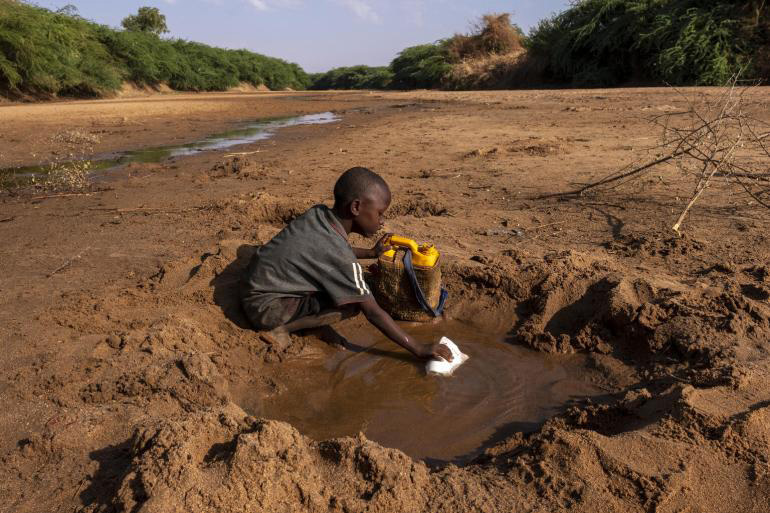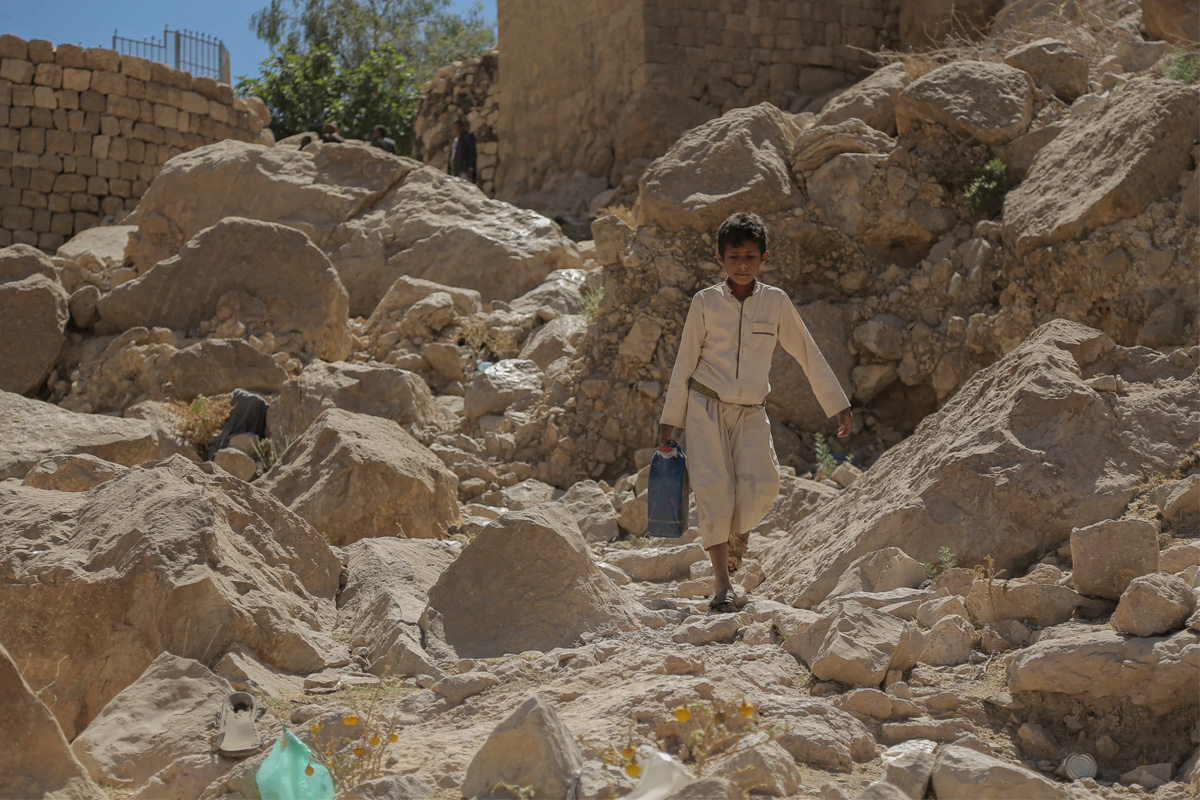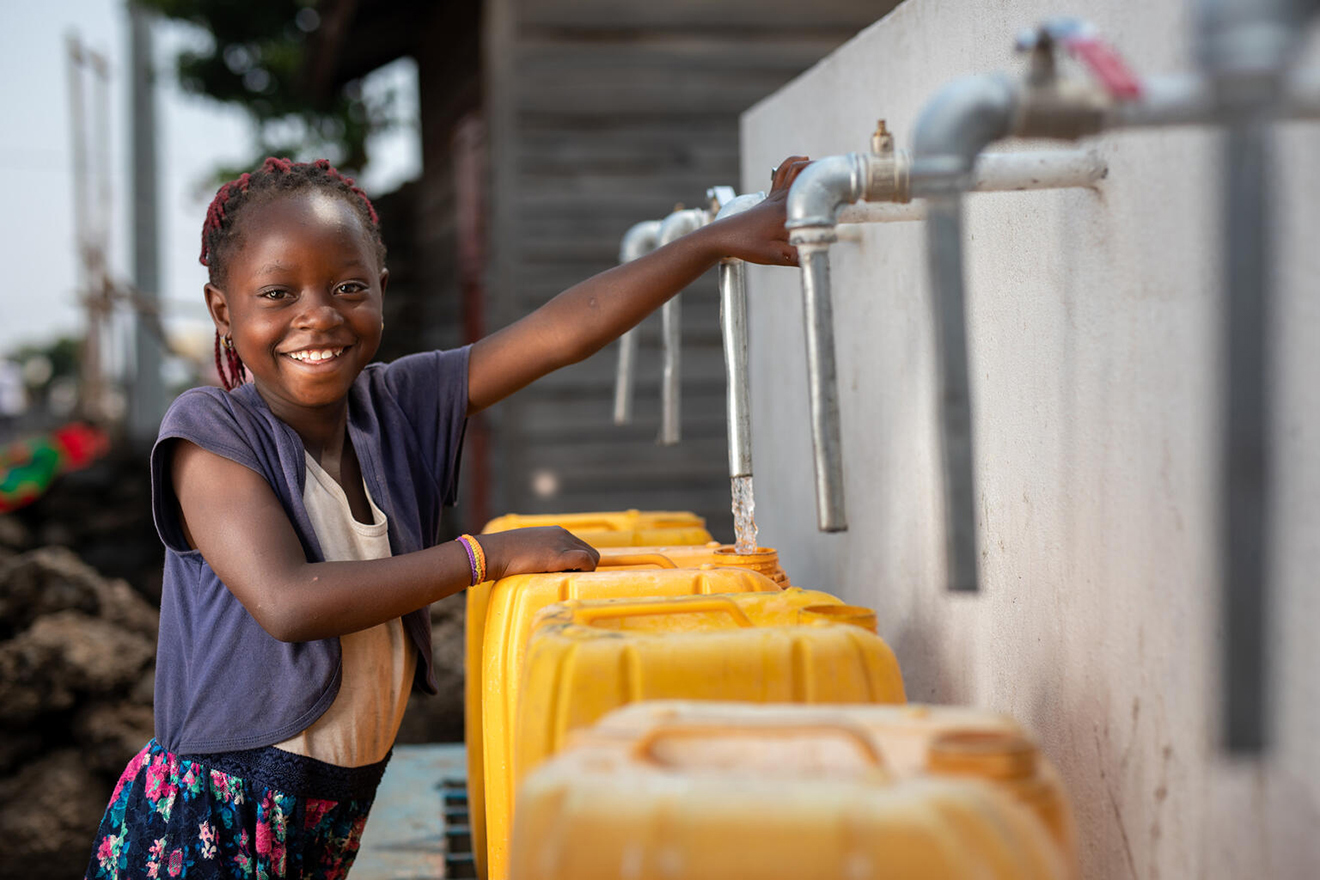Water benefits our lives in many different ways, but how can we value water properly and safeguard it effectively for everyone? This animation looks at how water means different things to different people. Their home and family life, their livelihood, their cultural practices, their wellbeing and their local environment, and asks the question - What does water mean to you?
This year’s UN World Water Development Report warned of a global water crisis, unless international cooperation is rapidly stepped up.
On this week’s episode of The Lid Is On, recorded the day after the release of the study on 21 March, Conor Lennon speaks to Richard Connor, the editor-in-chief of the report, Kristin Meyer from the UN Office for Disaster Risk Reduction (UNDRR), and Neil Dhot, from the International Federation of private water operators.
The conversation took place as part of the SDG Media Zone sessions at the UN Water Conference, held between 22 and 24 March.
Safe water is essential to life itself. No one stands to suffer from the consequences of water insecurity more than children. By 2030, half of the global population is expected to be living in water-stressed conditions. A deadly combination of disease, climate risks, and unsafe water, sanitation and hygiene creates a triple threat for children. Competition for water resources will only intensify with increasing urbanization, population growth and the threat of climate change. UNICEF examines the countries that face the greatest risk and where the WASH investments are at its lowest and how to mitigate these factors.
Water is critical for sustainable development. The issues of the eradication of poverty and hunger, the lack of access to safe drinking water, sanitation and hygiene, drought and climate change – are all related to water. On World Water Day, the UN Chamber Music Society premiered a virtual concert of Archimedes’s Dreams, composed by American composer Evan Fein.
The Freshwater Challenge aims to restore 300,000km of rivers - equivalent to more than 7 times around the Earth - and 350 million hectares of wetlands - an area larger than India - by 2030.
Climate change, environmental degradation and a growing population are exacerbating water scarcity. As the water cycle is disrupted, farmers are having to adapt and come up with inventive ways to harvest, store and use water. This helps them protect their crops and irrigate them when water is scarce. In fact, in Uganda, Burundi, India and Tanzania, water harvesting can increase crop production by 60 to 100 per cent. With 13 per cent of our work devoted to water, IFAD is helping smallholder farmers through simple but effective and climate-smart water infrastructure.
Babagon Catchment traverses three indigenous Dusun villages near the capital city of Sabah, on the island of Borneo. Forever Sabah – a civil society organization in Malaysia’s Sabah state is dedicated to the protection and restoration of the region’s natural habitats. The biodiversity in the catchment area boasts a wide variety of flora and fauna. But for the local communities protecting this biodiversity means protecting their water. Resident communities play a vital role in maintaining the water quality of the freshwater ecosystem. Across the three villages, community members have become River Rangers - dedicated people, who drive river monitoring and conservation efforts. With training and support, the River Rangers create maps, collect water samples, and identify biological indicators of water quality.
Students in a rural school near Gwembe learn about soilless cultivation, or hydroponics, in a greenhouse set up by the World Food Programme (WFP) in Zambia. It will come as no surprise that the most food-insecure people live in developing countries and in arid areas where little water is available – or too much water, of too poor a quality. Water is essential for food production, but decades of poor water management, misuse and pollution have degraded freshwater supplies and ecosystems. WFP helps to replenish water-depleted soils and aquifers through programmes that provide communities with water access and availability. These benefits also help to increase people’s food security, empowering them over the long term.
190 million children in 10 African countries are at the highest risk from a convergence of three water-related threats – inadequate water, sanitation, and hygiene (WASH); related diseases; and climate hazards – according to a new UNICEF analysis. Many of the worst-affected countries, particularly in the Sahel, are also facing instability and armed conflict, further aggravating children’s access to clean water and sanitation. Across the 10 hotspots, nearly one-third of children do not have access to at least basic water at home, and two-thirds do not have basic sanitation services.
Water is the lifeblood of a healthy people and planet and is critical for economic growth, healthy ecosystems, and life itself. But with over 2.3 billion people without safe drinking water and 3.6 billion people lacking safe sanitation, a global water crisis currently threatens development. The global economic costs of water insecurity estimated at nearly $500 billion per year. As the world’s largest multilateral source of financing for water in developing countries, the World Bank Group is committed to innovative, inclusive, and sustainable water action towards a water-secure world.
Water is vital to us all, so everyone needs to act. Every drop counts and your actions, big or small, can make a difference.
This is the story of a drop of groundwater that passes from hand to hand around the world, and the difficulties water is facing today.
In 2015 the world committed to ensuring access to water and sanitation for all by 2030. But we are seriously off-track. Billions of people are being held back, because this promise is not fulfilled. World Water Day 2023 (22 March) is about accelerating change and encouraging individuals to “Be the change” through actions. This year, the observance coincides with the UN 2023 Water Conference (22-24 March, New York), a once-in-a-generation opportunity to unite the world around solving the water crisis by designing a Water Action Agenda for a rapid change in the remainder of this decade.
By nature, water connects different environments, peoples and sectors. But growing demands for water, coupled with poor water management, have increased water stress around the world. Meanwhile, the effects of worsening climate change are often felt through water, in the form of floods or droughts. Something has to change.
ILO brings us the story of Yasin Muhumad Faarah, an Ethiopian farmer, lost all his cattle in a recent drought. Without a regular supply of water, his future livelihood and that of other members of the community was in jeopardy. Together they built a water collection basin that promises a viable future for them all.

